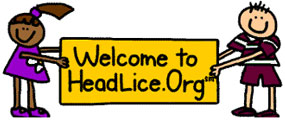“I’m starting to see a few cases of head lice now that kids have been in school awhile. The critters are white and about the size of a sesame seed. They are known as “obligate ectoparasites.” Obligate means they require a placental mammal host to survive (i.e. humans) and ectoparasites means they live outside the human body and need a host to survive. They do this by feeding on the host’s blood and can’t live off of a body for more than a day or so. Lice are spread by direct contact of a person’s head or hair with an infested individual or through sharing personal items such as hats, towels, brushes, helmets, hair ties or even car seat headrests. They do not jump or fly and are not transmitted by pets…
Treatment of lice requires a lot of patience. There really is no substitute for manual removal using meticulous combing with a lice comb. The patient or parent(s) of a child must take the time to properly comb every strand of hair to remove the lice and nits. Most experts recommend combing every three days for a couple of weeks.
Re-infestations are usually the result of improper removal of lice and nits. Chemical treatments kill live lice, but not the eggs. The treatments therefore have to be repeated in seven to ten days to kill lice after they hatch. Chemical treatments come in two varieties: insecticides and those that suffocate the lice. Insecticides are not benign. They should be used with caution in those with asthma, seizures, brain tumors, cancer, HIV and pregnant or nursing mothers…
Pesticide sprays do much more harm than good and are not recommended. Family members or other people who live in close contact with an infested person should be screened using the LiceMeister® comb.”
– Dr. John Roberts in The Times.

